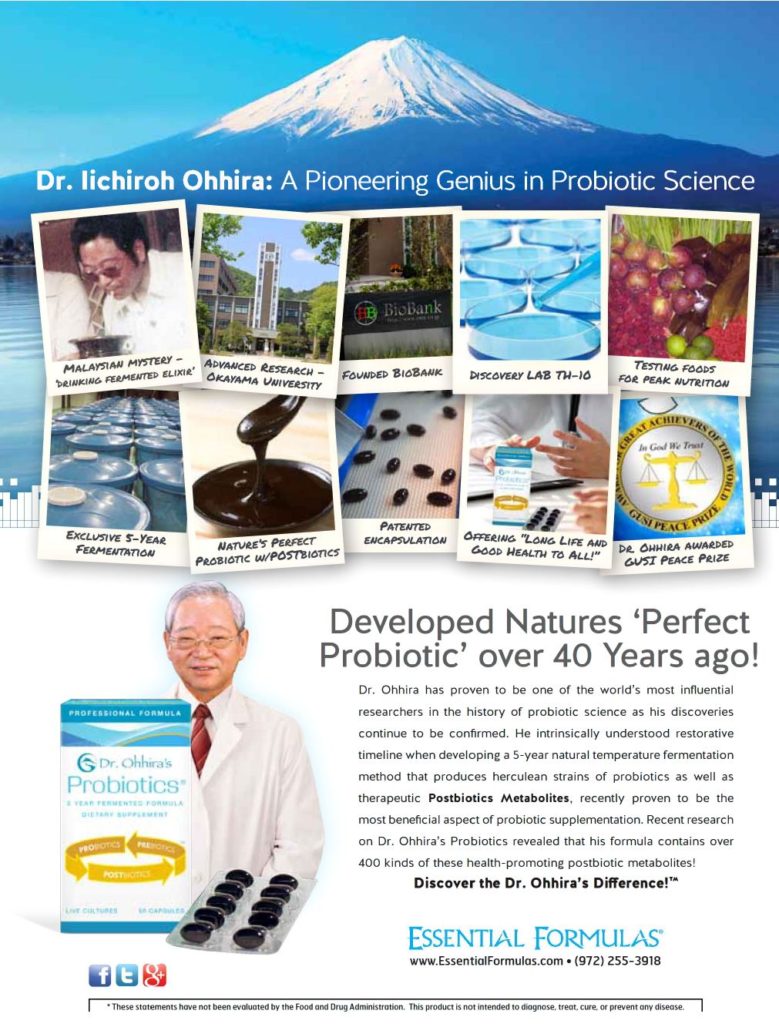What Improves Blood Viscosity?
Treating blood viscosity means treating the causes: Hematocrit can be lowered by the simple expedient of donating blood on a regular basis. Blood donation (or therapeutic phlebotomy) addresses two of the contributing factors to blood viscosity: hematocrit and RBC flexibility. This is because the drop in hemtocrit after blood donation stimulates the formation of new RBCs. Younger RBCs are more flexible than older ones. By regularly donating blood, you remove older, stiffer erythrocytes from circulation, to be replaced by younger, more deformable red blood cells.
Plasmapheresis can improve plasma viscosity by removing excessive high-weight molecular proteins, Hydration is also essential for optimal plasma viscosity. Supplements have a role to play also. Higher vitamin D levels are positively associated with improved RBC deformabiity and lower blood viscosity in post-menopausal women. It may be more than a coincidence that higher vitamin D levels are also associated with lower risk for COVID-19 and better outcomes. An exhaustive discussion of supplements that can improve blood viscosity is beyond the scope of this article, but a few that I have mentioned in the past are fish oil, nattokinase, phosphatidyl choline, Gingko biloba, and vitamin E. The November 2021 issue of the Townsend Letter also had a couple of excellent articles on the treatment of long-term COVID-19. Do those treatments also improve blood viscosity? Another interesting question.
Should We Be Testing Blood Viscosity?
I work for a lab that does whole blood viscosity testing, so it could be argued that I am biased. It is no accident that I ended up in laboratory medicine. My year of clinical lab diagnosis was one of my favorite classes at Bastyr, thanks to our excellent professor (thank you, Dr. Sheryl Berman). I have seen lab results motivate patients to take their health seriously, and I have seen lab results change doctors’ approach to cases and with good results. For the most part, I think more data is better than less, so yes, I have a bias toward lab testing in general. Could whole blood viscosity monitoring be used to guide treatments and alleviate symptoms of long-haul COVID-19 by helping us improve systemic perfusion? I think so, but it is still an open question.
I would like to thank my friend and colleague, Dan Cho, of Health OnVector, for his assistance in gathering much of the research for this article and helping frame the discussion. His assistance was invaluable, and I could not have done it without him.
References
- Taquet M, Dercon Q, et al. Incidence, co-occurrence, and evolution of long-COVID features: A 6-month retrospective cohort study of 273,618 survivors of COVID-19. PLoS Med. 2021 Sep 28;18(9):e1003773. doi: 10.1371/journal.pmed.1003773
- Al-Aly Z, Xie Y, Bowe B. High-dimensional characterization of post-acute sequelae of COVID-19. Nature. 2021 Jun;594(7862):259-264. doi: 10.1038/s41586-021-03553-9
- Rezkalla SH, Kloner RA. Post-Acute Sequelae of SARS-COVID-2 Syndrome: Just the Beginning. Cardiol Res. 2021;12(5):279-285. doi:10.14740/cr1290
- Logue JK, Franko NM, McCulloch DJ, et al. Sequelae in Adults at 6 Months after COVID-19 Infection. JAMA Netw Open. 2021;4(2). doi:10.1001/JAMANETWORKOPEN.2021.0830
- Carfì A, Bernabei R, Landi F. Persistent symptoms in patients after acute COVID-19. JAMA – J Am Med Assoc. 2020;324(6):603-605. doi:10.1001/JAMA.2020.12603
- Yan Z, Yang M, Lai CL. Long covid-19 syndrome: A comprehensive review of its effect on various organ systems and recommendation on rehabilitation plans. Biomedicines. 2021;9(8). doi:10.3390/BIOMEDICINES9080966
- World Health Organization. A clinical case definition of post COVID-19 condition by a Delphi consensus. 2021 October 6. Retrieved from: https://apps.who.int/iris/bitstream/handle/10665/345824/WHO-2019-nCoV-Post-COVID-19-condition-Clinical-case-definition-2021.1-eng.pdf. Accessed 9/16/2021,
- Browning GG, Gatehouse S, Lowe GD. Blood viscosity as a factor in sensorineural hearing impairment. Lancet. 1986;1(8473):121-123. Accessed October 10, 2013. http://www.ncbi.nlm.nih.gov/pubmed/2867347
- Williamson TH, Rumley A, Lowe GD. Blood viscosity, coagulation, and activated protein C resistance in central retinal vein occlusion: a population controlled study. Br J Ophthalmol. 1996;80(3):203-208. doi:10.1136/bjo.80.3.203
- Blaha M, Rencova E, Langrova H, et al. Rheohaemapheresis in the treatment of nonvascular age-related macular degeneration. Atheroscler Suppl. 2013;14(1):179-184. doi:10.1016/j.atherosclerosissup.2012.10.023
- Gertz MA, Kyle RA. Hyperviscosity syndrome. J Intensive Care Med. 1995;10(3):128-141. doi:10.1177/088506669501000304
- Gudmundsson M, Oden A, Bjelle A. On whole blood viscosity measurements in healthy individuals and in rheumatoid arthritis patients. Biorheology. 1994;31(4):407-416. doi:10.3233/BIR-1994-31409
- Pope RM, Mannik M, Gilliland BC, Teller DC. The hyperviscosity syndrome in rheumatoid arthritis due to intermediate complexes formed by self‐association of IgG‐rheumatoid factors. Arthritis Rheum. 1975;18(2):97-106. doi:10.1002/ART.1780180201
- Farber PL. Can erythrocytes behavior in microcirculation help the understanding the physiopathology and improve prevention and treatment for covid-19? Clin Hemorheol Microcirc. 2021;78(1):41-47. doi:10.3233/CH-201082
- Teng ZY, Pei LC, Zhang Y, Li Y, Wang RT. Whole blood viscosity is negatively associated with bone mineral density in postmenopausal women with osteoporosis. Bone. 2013;56(2):343-346. doi:10.1016/J.BONE.2013.07.001
- Holsworth R, Larsen P. Measuring Blood Viscosity to Improve Patient Outcomes. The Townsend Letter. 2012; 342 (53-6).
- Ajmani RS, Metter EJ, Jaykumar R, et al. Hemodynamic changes during aging associated with cerebral blood flow and impaired cognitive function. Neurobiol Aging. 2000 Mar-Apr;21(2):257-69. doi: 10.1016/s0197-4580(00)00118-4
- Ciuffetti G, Schillaci G, Lombardini R, et al. Prognostic impact of low-shear whole blood viscosity in hypertensive men. Eur J Clin Invest. 2005 Feb;35(2):93-8. doi: 10.1111/j.1365-2362.2005.01437.x.
- Rillaerts E, van Gaal L, Xiang DZ, et al. Blood viscosity in human obesity: relation to glucose tolerance and insulin status. Int J Obes. 1989;13(6):739-45
- Lowe G D O, et al., Blood Viscosity in Young Male Diabetics with and without Retinopathy, DiabetoIogia 1980; 18:359-63.
- Peduzzi M, et al., Comparative evaluation of blood viscosity in diabetic retinopathy, Int Ophthalmology 1984; 7:15-9.
- Tamariz LJ, Young JH, Pankow JS, et al. Blood viscosity and hematocrit as risk factors for type 2 diabetes mellitus: the atherosclerosis risk in communities (ARIC) study. Am J Epidemiol. 2008 Nov 15;168(10):1153-60.
- Danesh J, Collins R, Peto R, Lowe GD. Haematocrit, viscosity, erythrocyte sedimentation rate: meta-analyses of prospective studies of coronary heart disease. Eur Heart J 2000; 21:515-520.
- Coull BM, Beamer N, et al. Chronic blood hyperviscosity in subjects with acute stroke, transient ischemic attack, and risk factors for stroke. Stroke 1991; 22:162-8
- Rafnsson S, Deary IJ, et al. Haemorheological predictors of cognitive decline: the Edinburgh Artery Study. Age Ageing. 2010 Mar;39(2):217-22. doi: 10.1093/ageing/afp227
- Østergaard L. SARS CoV-2 related microvascular damage and symptoms during and after COVID-19: Consequences of capillary transit-time changes, tissue hypoxia and inflammation. Physiol Rep. 2021;9(3). doi:10.14814/PHY2.14726
- Maier CL, Truong AD, Auld SC, Polly DM, Tanksley CL, Duncan A. COVID-19-associated hyperviscosity: a link between inflammation and thrombophilia? Lancet. 2020 Jun 6;395(10239):1758-1759. doi: 10.1016/S0140-6736(20)31209-5
- Farber PL. Can erythrocytes behavior in microcirculation help the understanding the physiopathology and improve prevention and treatment for covid-19? Clin Hemorheol Microcirc. 2021;78(1):41-47. doi:10.3233/CH-201082
- Koenig W, Ernst E. The possible role of hemorheology in atherothrombogenesis. Atherosclerosis. 1992;94(2-3):93-107. doi:10.1016/0021-9150(92)90234-8
- Weng X, Cloutier G, Beaulieu R, Roederer GO. Influence of acute-phase proteins on erythrocyte aggregation. Am J Physiol. 1996;271(6 Pt 2):H2346-H2352. doi:10.1152/ajpheart.1996.271.6.H2346
- Zhang L, Hou J, Ma FZ, Li J, Xue S, Xu ZG. The common risk factors for progression and mortality in COVID-19 patients: a meta-analysis. Arch Virol. 2021;166(8):2071-2087. doi:10.1007/s00705-021-05012-2
- Liu F, Li L, Xu M, et al. Prognostic value of interleukin-6, C-reactive protein, and procalcitonin in patients with COVID-19. J Clin Virol. 2020;127:104370. doi:10.1016/j.jcv.2020.104370
- Devereux RB, Case DB, Alderman MH, Pickering TG, Chien S, Laragh JH. Possible role of increased blood viscosity in the hemodynamics of systemic hypertension. Am J Cardiol. 2000;85(10):1265-1268. doi:10.1016/s0002-9149(00)00744-x
- Fowkes FG, Lowe GD, Rumley A, Lennie SE, Smith FB, Donnan PT. The relationship between blood viscosity and blood pressure in a random sample of the population aged 55 to 74 years. Eur Heart J. 1993;14(5):597-601. doi:10.1093/eurheartj/14.5.597
- Smith WC, Lowe GD, Lee AJ, Tunstall-Pedoe H. Rheological determinants of blood pressure in a Scottish adult population. J Hypertens. 1992;10(5):467-472. doi:10.1097/00004872-199205000-00010
- Levenson J, Simon AC, Cambien FA, Beretti C. Cigarette smoking and hypertension. Factors independently associated with blood hyperviscosity and arterial rigidity. Arteriosclerosis. 1987;7(6):572-577. doi:10.1161/01.atv.7.6.572
- Letcher RL, Chien S, Pickering TG, Sealey JE, Laragh JH. Direct relationship between blood pressure and blood viscosity in normal and hypertensive subjects. Role of fibrinogen and concentration. Am J Med. 1981;70(6):1195-1202. doi:10.1016/0002-9343(81)90827-5
- Silverio A, Di Maio M, Citro R, et al. Cardiovascular risk factors and mortality in hospitalized patients with COVID-19: systematic review and meta-analysis of 45 studies and 18,300 patients. BMC Cardiovasc Disord. 2021;21(1):23. Published 2021 Jan 7. doi:10.1186/s12872-020-01816-3
- Nannoni S, de Groot R, Bell S, Markus HS. Stroke in COVID-19: A systematic review and meta-analysis. Int J Stroke. 2021;16(2):137-149. doi:10.1177/1747493020972922
- Guo T, Fan Y, Chen M, et al. Cardiovascular Implications of Fatal Outcomes of Patients With Coronavirus Disease 2019 (COVID-19) [published correction appears in JAMA Cardiol. 2020 Jul 1;5(7):848]. JAMA Cardiol. 2020;5(7):811-818. doi:10.1001/jamacardio.2020.1017
- Zheng Z, Peng F, Xu B, et al. Risk factors of critical & mortal COVID-19 cases: A systematic literature review and meta-analysis. J Infect. 2020;81(2):e16-e25. doi:10.1016/j.jinf.2020.04.021
- Woodward M, Rumley A, Tunstall-Pedoe H, Lowe GD. Associations of blood rheology and interleukin-6 with cardiovascular risk factors and prevalent cardiovascular disease. Br J Haematol. 1999;104(2):246-257. doi:10.1046/j.1365-2141.1999.01158.x
- Yarnell JW, Baker IA, Sweetnam PM, et al. Fibrinogen, viscosity, and white blood cell count are major risk factors for ischemic heart disease. The Caerphilly and Speedwell collaborative heart disease studies. Circulation. 1991;83(3):836-844. doi:10.1161/01.cir.83.3.836
- Neumann FJ, Katus HA, Hoberg E, et al. Increased plasma viscosity and erythrocyte aggregation: indicators of an unfavourable clinical outcome in patients with unstable angina pectoris. Br Heart J. 1991;66(6):425-430. doi:10.1136/hrt.66.6.425
- Lowe GD, Lee AJ, Rumley A, Price JF, Fowkes FG. Blood viscosity and risk of cardiovascular events: the Edinburgh Artery Study. Br J Haematol. 1997;96(1):168-173. doi:10.1046/j.1365-2141.1997.8532481.x
- Kim L, Garg S, O’Halloran A, et al. Risk Factors for Intensive Care Unit Admission and In-hospital Mortality Among Hospitalized Adults Identified through the US Coronavirus Disease 2019 (COVID-19)-Associated Hospitalization Surveillance Network (COVID-NET). Clin Infect Dis. 2021;72(9):e206-e214. doi:10.1093/cid/ciaa1012
- Cecchi E, Liotta AA, Gori AM, et al. Relationship between blood viscosity and infarct size in patients with ST-segment elevation myocardial infarction undergoing primary percutaneous coronary intervention. Int J Cardiol. 2009;134(2):189-194. doi:10.1016/j.ijcard.2008.01.039
- Vrsalovic M, Vrsalovic Presecki A. Cardiac troponins predict mortality in patients with COVID-19: A meta-analysis of adjusted risk estimates. J Infect. 2020;81(3):e99-e100. doi:10.1016/j.jinf.2020.05.022
- Atici AG, Kayhan S, Aydin D, Yilmaz YA. Plasma viscosity levels in pulmonary thromboembolism. Clin Hemorheol Microcirc. 2013;55(3):313-320. doi:10.3233/CH-2012-1637
- Alt E, Banyai S, Banyai M, Koppensteiner R. Blood rheology in deep venous thrombosis–relation to persistent and transient risk factors. Thromb Res. 2002;107(3-4):101-107. doi:10.1016/s0049-3848(02)00302-x
- Ahmed S, Zimba O, Gasparyan AY. Thrombosis in Coronavirus disease 2019 (COVID-19) through the prism of Virchow’s triad. Clin Rheumatol. 2020;39(9):2529-2543. doi:10.1007/s10067-020-05275-1
- Demelo-Rodríguez P, Cervilla-Muñoz E, Ordieres-Ortega L, et al. Incidence of asymptomatic deep vein thrombosis in patients with COVID-19 pneumonia and elevated D-dimer levels. Thromb Res. 2020;192:23-26. doi:10.1016/j.thromres.2020.05.018
- Høieggen A, Fossum E, Moan A, Enger E, Kjeldsen SE. Whole-blood viscosity and the insulin-resistance syndrome. J Hypertens. 1998;16(2):203-210. doi:10.1097/00004872-199816020-00011
- Cho YI, Mooney MP, Cho DJ. Hemorheological disorders in diabetes mellitus. J Diabetes Sci Technol. 2008;2(6):1130-1138. doi:10.1177/193229680800200622
- Jax TW, Peters AJ, Plehn G, Schoebel FC. Hemostatic risk factors in patients with coronary artery disease and type 2 diabetes – a two year follow-up of 243 patients. Cardiovasc Diabetol. 2009;8:48. Published 2009 Sep 7. doi:10.1186/1475-2840-8-48
- Guo W, Li M, Dong Y, et al. Diabetes is a risk factor for the progression and prognosis of COVID-19 [published online ahead of print, 2020 Mar 31]. Diabetes Metab Res Rev. 2020;e3319. doi:10.1002/dmrr.3319
- Zhou Y, Chi J, Lv W, Wang Y. Obesity and diabetes as high-risk factors for severe coronavirus disease 2019 (Covid-19). Diabetes Metab Res Rev. 2021;37(2):e3377. doi:10.1002/dmrr.3377
- Carroll S, Cooke CB, Butterly RJ. Plasma viscosity, fibrinogen and the metabolic syndrome: effect of obesity and cardiorespiratory fitness. Blood Coagul Fibrinolysis. 2000;11(1):71-78.
- de Simone G, Devereux RB, Chien S, Alderman MH, Atlas SA, Laragh JH. Relation of blood viscosity to demographic and physiologic variables and to cardiovascular risk factors in apparently normal adults. Circulation. 1990;81(1):107-117. doi:10.1161/01.cir.81.1.107
- Ernst E, Weihmayr T, Schmid M, Baumann M, Matrai A. Cardiovascular risk factors and hemorheology. Physical fitness, stress and obesity. Atherosclerosis. 1986;59(3):263-269. doi:10.1016/0021-9150(86)90121-8
- Simonnet A, Chetboun M, Poissy J, et al. High Prevalence of Obesity in Severe Acute Respiratory Syndrome Coronavirus-2 (SARS-CoV-2) Requiring Invasive Mechanical Ventilation [published correction appears in Obesity (Silver Spring). 2020 Oct;28(10):1994]. Obesity (Silver Spring). 2020;28(7):1195-1199. doi:10.1002/oby.22831
- Lowe GD, Drummond MM, Forbes CD, Barbenel JC. The effects of age and cigarette-smoking on blood and plasma viscosity in men. Scott Med J. 1980;25(1):13-17. doi:10.1177/003693308002500103
- Ernst E. Haemorheological consequences of chronic cigarette smoking. J Cardiovasc Risk. 1995;2(5):435-439. doi:10.1177/174182679500200508
- Levenson J, Simon AC, Cambien FA, Beretti C. Cigarette smoking and hypertension. Factors independently associated with blood hyperviscosity and arterial rigidity. Arteriosclerosis. 1987;7(6):572-577. doi:10.1161/01.atv.7.6.572
- Ernst E, Koenig W, Matrai A, Filipiak B, Stieber J. Blood rheology in healthy cigarette smokers. Results from the MONICA project, Augsburg. Arteriosclerosis. 1988;8(4):385-388. doi:10.1161/01.atv.8.4.385
- Reddy RK, Charles WN, Sklavounos A, Dutt A, Seed PT, Khajuria A. The effect of smoking on COVID-19 severity: A systematic review and meta-analysis. J Med Virol. 2021;93(2):1045-1056. doi:10.1002/jmv.26389
- Fowkes FG, Pell JP, Donnan PT, et al. Sex differences in susceptibility to etiologic factors for peripheral atherosclerosis. Importance of plasma fibrinogen and blood viscosity. Arterioscler Thromb. 1994;14(6):862-868. doi:10.1161/01.atv.14.6.862
- Rosenson RS, McCormick A, Uretz EF. Distribution of blood viscosity values and biochemical correlates in healthy adults. Clin Chem. 1996;42(8 Pt 1):1189-1195.
- Kameneva MV, Watach MJ, Borovetz HS. Gender difference in rheologic properties of blood and risk of cardiovascular diseases. Clin Hemorheol Microcirc. 1999;21(3-4):357-363.
- La Vignera S, Cannarella R, Condorelli RA, Torre F, Aversa A, Calogero AE. Sex-Specific SARS-CoV-2 Mortality: Among Hormone-Modulated ACE2 Expression, Risk of Venous Thromboembolism and Hypovitaminosis D. Int J Mol Sci. 2020;21(8):2948. Published 2020 Apr 22. doi:10.3390/ijms21082948
- Williamson EJ, Walker AJ, Bhaskaran K, et al. Factors associated with COVID-19-related death using OpenSAFELY. Nature. 2020;584(7821):430-436. doi:10.1038/s41586-020-2521-4
- Coppola L, Caserta F, De Lucia D, et al. Blood viscosity and aging. Arch Gerontol Geriatr. 2000;31(1):35-42. doi:10.1016/s0167-4943(00)00063-7
- Simmonds MJ, Meiselman HJ, Baskurt OK. Blood rheology and aging. J Geriatr Cardiol. 2013;10(3):291-301. doi:10.3969/j.issn.1671-5411.2013.03.010
- Coomes EA, Haghbayan H. Interleukin-6 in Covid-19: A systematic review and meta-analysis. Rev Med Virol. 2020;30(6):1-9. doi:10.1002/rmv.2141
- Dhas Y, Banerjee J, Damle G, Mishra N. Serum 25(OH)D Concentration and Cardiovascular Disease Risk Markers Among Middle-Aged Healthy and Type 2 Diabetic Subjects. Horm Metab Res. 2021;10.1055/a-1534-2747. doi:10.1055/a-1534-2747
- Farber PL, Dias A, Freitas T, et al. Evaluation of hemorheological parameters as biomarkers of calcium metabolism and insulin resistance in postmenopausal women. Clin Hemorheol Microcirc. 2021;77(4):395-410. doi:10.3233/CH-200956
- Merzon E, Tworowski D, Gorohovski A, et al. Low plasma 25(OH) vitamin D level is associated with increased risk of COVID-19 infection: an Israeli population-based study. FEBS J. 2020;287(17):3693-3702. doi:10.1111/febs.15495
- Munshi R, Hussein MH, Toraih EA, et al. Vitamin D insufficiency as a potential culprit in critical COVID-19 patients. J Med Virol. 2021;93(2):733-740. doi:10.1002/jmv.26360
- von Tempelhoff GF, Velten E, Yilmaz A, Hommel G, Heilmann L, Koscielny J. Blood rheology at term in normal pregnancy and in patients with adverse outcome events. Clin Hemorheol Microcirc. 2009;42(2):127-139. doi:10.3233/CH-2009-1193
- Wastnedge EAN, Reynolds RM, van Boeckel SR, et al. Pregnancy and COVID-19. Physiol Rev. 2021;101(1):303-318. doi:10.1152/physrev.00024.2020
- Celik T, Yilmaz MI, Balta S, et al. The Relationship Between Plasma Whole Blood Viscosity and Cardiovascular Events in Patients With Chronic Kidney Disease. Clin Appl Thromb Hemost. 2017;23(6):663-670. doi:10.1177/1076029616634888

Dr. Pushpa Larsen graduated from Bastyr University in naturopathic medicine, naturopathic midwifery, and spirituality, health and medicine. She worked as a research clinician for the Bastyr University Research Institute and as affiliate clinical faculty for Bastyr University, training students in her clinic. She practiced in West Seattle for 10 years before joining Meridian Valley Lab as a consulting physician 12 years ago. She is currently the manager of consulting and education and a member of the development team. Dr. Larsen has consulted with hundreds of doctors every year on the use and interpretation of 24-hour urine hormone profiles, blood viscosity tests, and other tests offered by Meridian Valley Lab.
plarsen@meridianvalleylab.com






